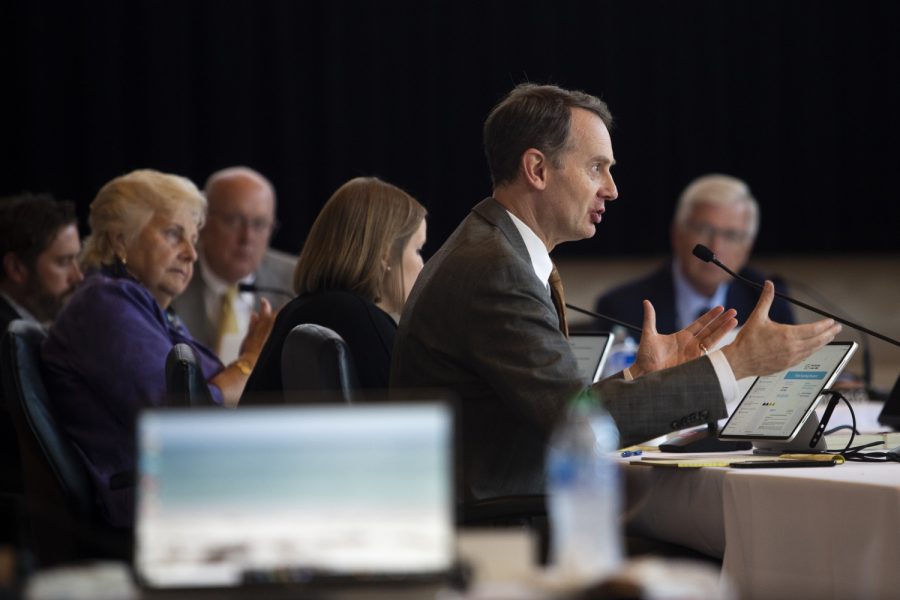Setting off for church on the morning of May 20, Gerri Nichols began feeling ill. And when she started slurring her speech, her husband realized she might be having a stroke.
For Gerri Nichols, 69, and husband Highland Nichols, the Stroke Robot at the Mercy Medical Center in Clinton is the main reason she has almost fully recovered from the stroke she suffered on May 20.
Harold Adams, a University of Iowa professor of neurology and the director of the UI Stroke Center, demonstrated an examination of a stroke patient at the UI Hospitals & Clinics on Tuesday. The Stroke Robot at Mercy Medical Center in Clinton is the first to be used in Iowa.
"The Stroke Robot is an important first step in managing stroke and one of the vital ways physicians in Iowa can improve the medical response time to victims of stroke," he said.
The Stroke Robot offers new hope for Iowa stroke victims by providing UI physicians the ability to examine patients from a distance during critical early minutes.
The robot allows the physician to test patients for any cognitive impairment to their field of vision, sensitivity to touch, visual comprehension, and to their ability to read simple sentences.
The Stroke Robot program at the UI started in 2006, examining around 10 patients per year, and it has grown to around 120 patients per year.
Though the Stroke Robot was the primary reason for Gerri Nichols’ recovery, Adams said early detection and treatment are key in the "chain of survival" for treating strokes and that it is important for a stroke to be seen as a life-threatening disease and for greater public awareness of the symptoms and signs of stroke.
"People having strokes may not recognize they are having a stroke, so it is important that friends and family know the signs," he said.
A stroke occurs when the blood supply to the brain is blocked by a blood clot or hemorrhage. The areas of the brain that stop receiving blood can suffer irreparable damage from this interruption. Because of this, every minute counts when treating a patients who have suffered strokes.
Gerri Nichols was rushed to the Mercy-Clinton emergency room, where she was examined just minutes later by UI Assistant Professor Enrique Leira by means of the robot. Leira determined she had suffered a stroke and arranged for her to be airlifted to the UIHC to remove the blood clot from her brain.
Within four and a half hours of the first symptoms, she was already out of surgery and recovering.
"The ability for Mercy to connect quickly to the advanced and specialized care provided by the University of Iowa Stroke team further enhances the quality of the care that we can give to the people in Clinton and the surrounding area," said Sean Williams, the president and CEO of Mercy Medical Center, in a UI news release. "It brings a world-class provider into our organization, and it is very exciting to be a part of this expanded level of care."
Highland Nichols credited recent advancements in medical treatment for stroke victims as the reason Gerri Nichols had a more successful recovery than her father did.
"Twenty years ago, Gerri’s father suffered a stroke and was left totally paralyzed by the event," he said. "The fact that Gerri is almost 100 percent recovered is a credit the technology and the excellent care she received by the doctors at Mercy-Clinton and the UI Hospitals and Clinics."
Adams hopeS that Stroke Robot technology will be introduced to more hospitals in Iowa as more stroke centers open in the future.
"Telemedicine is a real advance," he said. "… It gives us the chance to evaluate strokes and has the potential to treat other illnesses."






